The Surroundings of Split 2
Close to Split we come across Trogir, Trogir is cool, it’s cool because it’s a small and beautiful place and old walls protect its maze of streets. It’s got a large promenade lined with bars and cafes, and luxury yachts in summer. Trogir is unique amongst the Dalmation towns due to the mixture of architecture: Romanesque and Renaissance buildings (two styles that prospered during the Venetian reign), and if we add to this the magnificent cathedral, it’s no surprise that in 1997 it won World Heritage status.
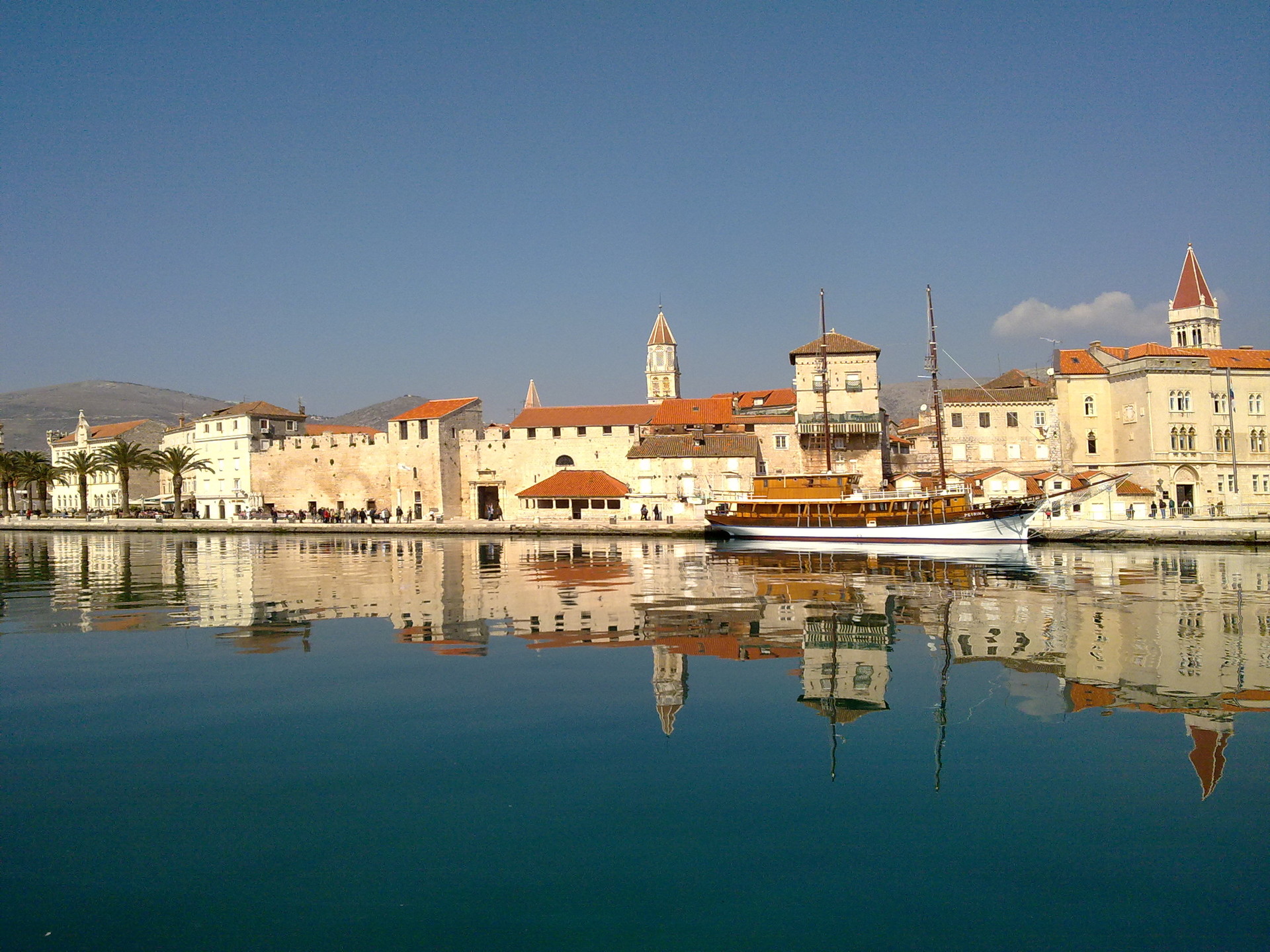
It’s easy to escape for a day from Split to Trogir, a tranquil place, ideal for spending a few days and from which you can take some excursions to nearby islands.
It occupies a tiny island in the narrow canal that separates the island from the continent, joined to the coastal road. The nearest beach is 4km to the west, at the Medena Hotel. The heart of this old town is separated from the continent by a small canal and is found barely a few minutes’ walk away from the bus station. After crossing the small bridge that is close to the station, you’ll go through the North gate. To come out onto the main street of Trogir, Gradska, you have to walk to the end of the beach and turn left (east). The highlights of Trogir are towards Trg Ivana Pavía II, just in front. The promenade, Obala Bana Berislavica, is lined with bars, restaurants and cafes, with views of Čiovo island. The old town is linked to this island by a drawbridge to the south.
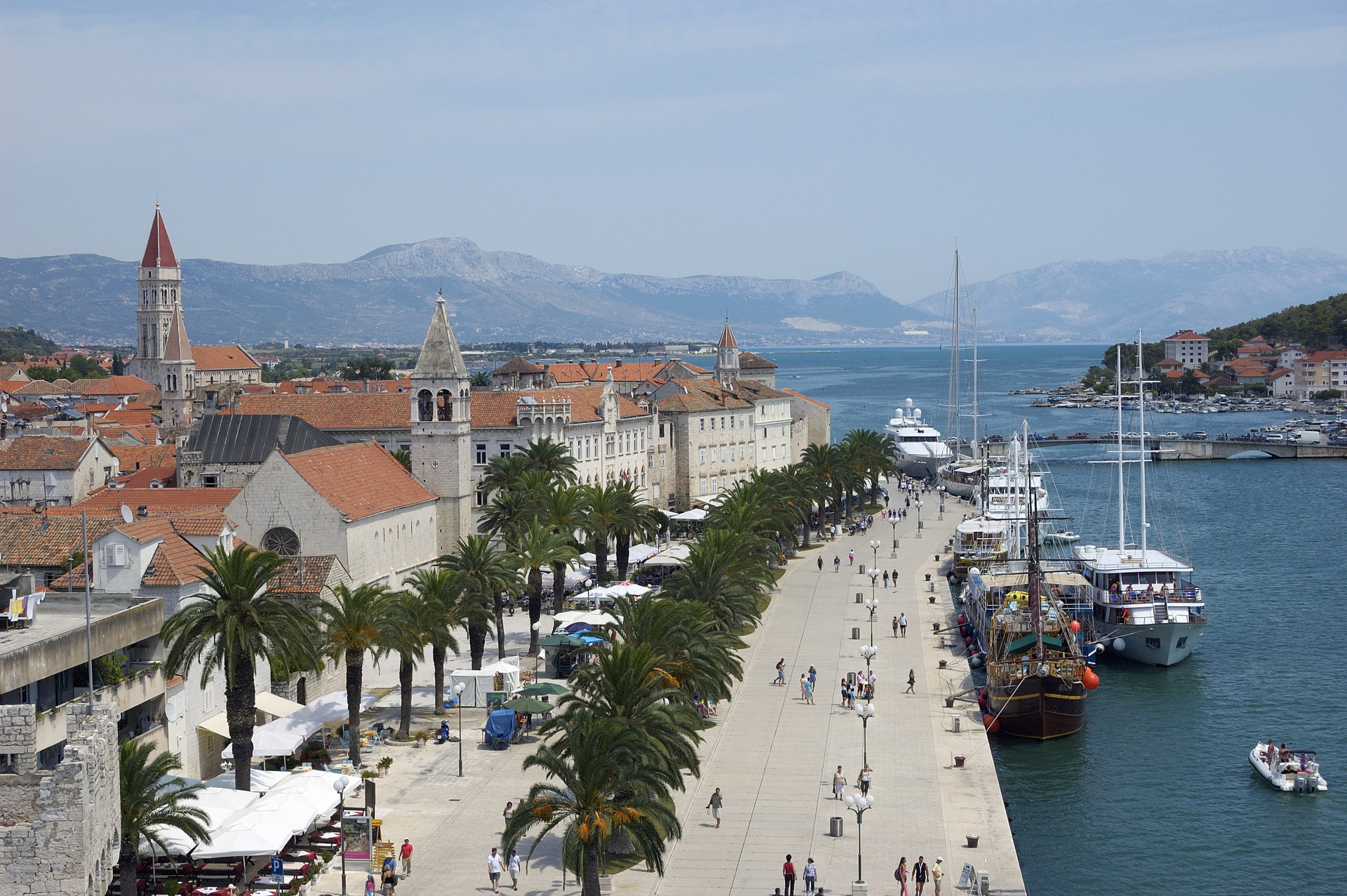
I must tell you that although small, Trogir has many marvels. It’s a place where many of the buildings from its golden age (said to be between the XIII and XV century) are still intact. Upon entering, take a look at the Renaissance style North gate, where the statue of Saint Iván Orsini, the city’s protector, protrudes from the upper part. When descending Kohl-Genscher, you can find the City Museum, located in the former palace of Garanjin Fanfogna. Its 5 rooms are home to books, documents, drawings and costumes from Trogir’s period of rich history.
The peal of the place is the Venetian San Lovro Cathedral, one of Croatia’s most beautiful pieces of architecture. First, observe the Romanesque entrance hall. Next to this are lion figures (symbols of Venice, as I’ve mentioned in my Venice entries) and above are Adam and Eve who are the earliest example of nudity in Dalmatian sculptures. On the outside pilasters the saints are represented, the central scenes symbolize the months and the small pilasters show scenes of hunting. Above all of this protrudes the Nativity of Christ.
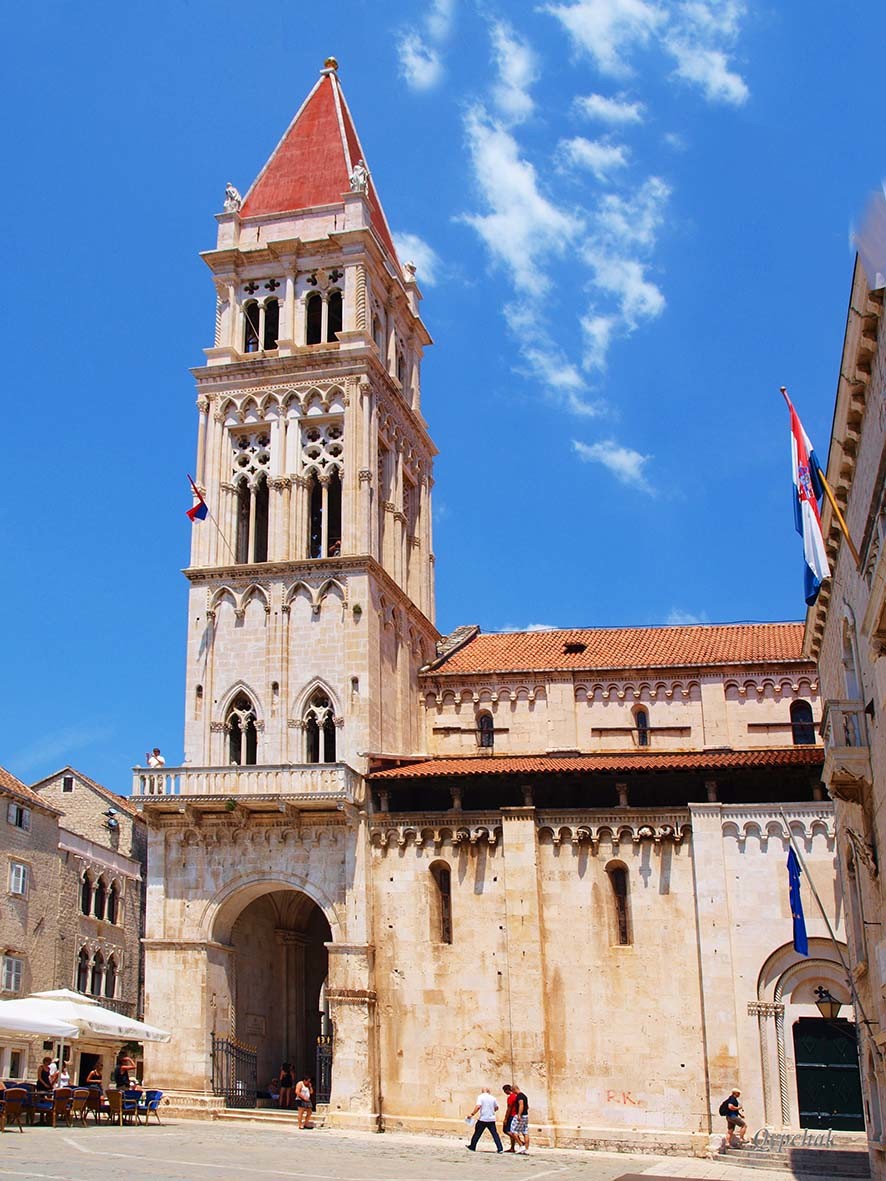
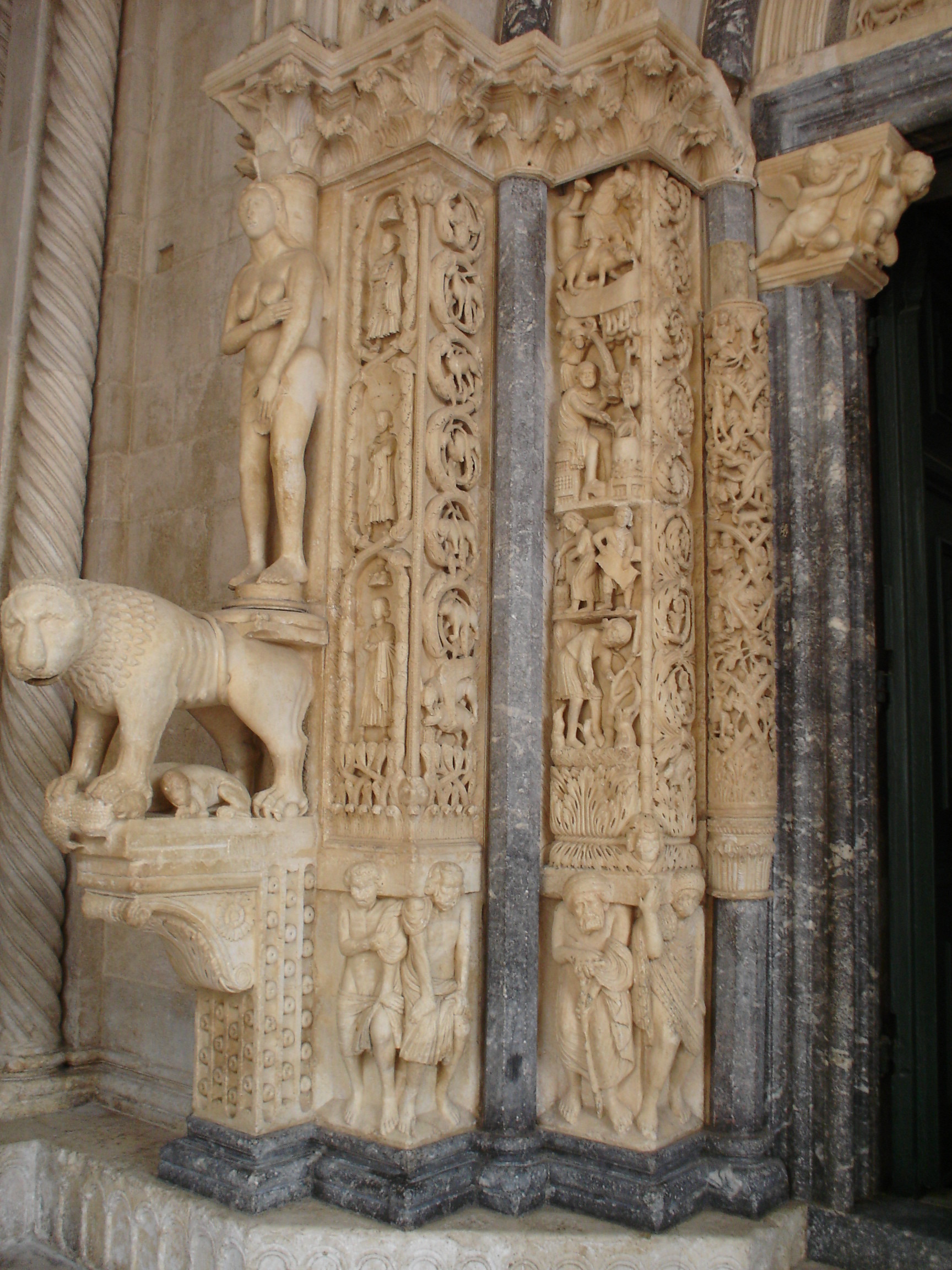
In the entrance of the cathedral there is a sign that warns that one must “dress appropriately”, be it, men with their torso covered (and women too, of course) and shorts are prohibited. To enjoy some amazing views you can also climb the cathedral’s 47m high tower (if it’s open). In order to be guaranteed entry to the cathedral, you need to go in the morning. It could be closed in the afternoon as the timetable is a little unpredictable.
Before leaving the place, it’s worth visiting the XV century town hall, that is in front of the cathedral, with a gothic style patio decorated with coats of arms and a stone head.
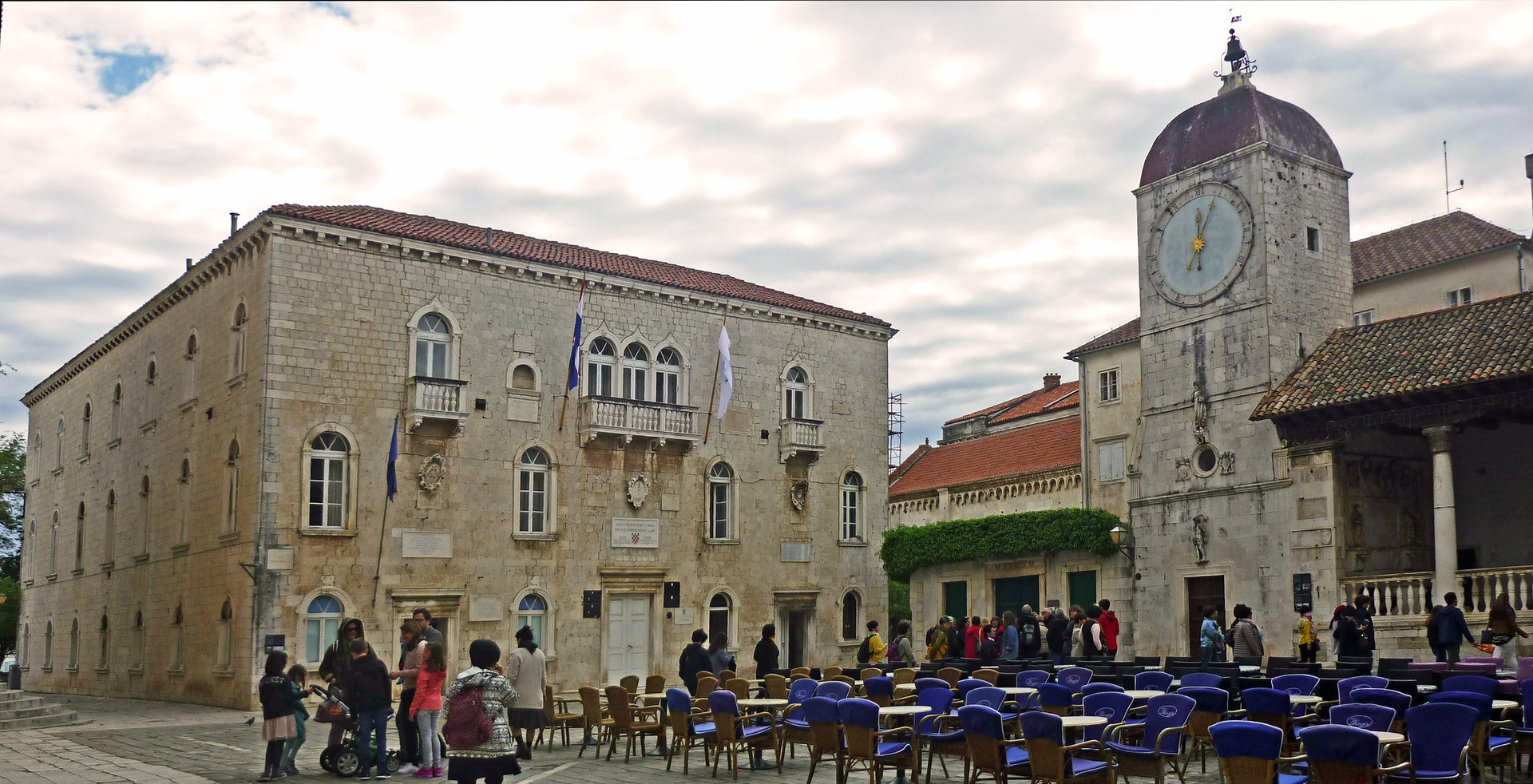
South-west of the cathedral, you can spot the magnificent sculpted hallway of the San Juan Bautista church which respresents the mourning of Christ. Inside, there are paintings and sculptures from the period.
On the pier, you will see the hallway and the patio of the Lucic palace. If you keep walking you’ll come to the Kamerlengo fortress, a medieval fort built in the XV century which, in its day, was joined to the city walls. At its furthest point, you can see an elegant bandstand built by the French marshal Marmont during the Napoleonic occupation of Dalmatia; the marshal used to sit here and play cards between the waves. In summer the fortress becomes an open-air cinema with screenings at 9pm.
Each year from mid-June to mid-August, Trogir plunges into a summer music festival with concerts of all types of music.
To sleep cheap there is the Vranjica Belvedere Campsite which is 5km from Trogir in a road diversion that leads to Zadar, this campsite provides activities like tennis, cycling, windsurfing, water skiing, sailing and horse-riding. You can take the number 24 bus from the bus station. Or the Villa Tina which is very well decorated, with spacious and well-lit rooms, which is great if you’re looking to relax and swim. It’s 5km west of Trogir, exactly on the coast, close to the beach. You can enjoy the views whilst relaxing on the terrace.
A little more expensive, we have the Pasike Hotel, a hotel fit for Gods in Trogir (and in all of Dalmatia), with 8 bedrooms with XIX century furnishings. The rooms are painted in bright colours, from which the sturdy beds made from walnut and forged iron (covered by knitted bedspreads) stand out. The friendly and efficient staff wear traditional suits, each bedroom has a satellite TV and Wi-Fi, and there is a lovely rooftop terrace with two tables. The clients are offered a welcome drink: a glass of rakija (liquor), champagne and lemon, along with a rafioli, a traditional sweet from Trogir made from almonds. It’s absolutely necessary to reserve in advance. In October or between November and April, they offer discounts between 20 and 30% respectively. The restaurant is good too.
The intercity buses that leave south from Zadar (130km) and north from Split (28km) pass through Trogir. Taking one from Trogir to Zadar could be more difficult, as they usually arrive full from Split.
The number 37 city bus from Split leaves every half an hour all day, which is the one I took, with a stop at Split airport on the way to Trogir, but it leaves from the bus station and takes longer than the intercity bus. In both directions, you can buy a ticket valid for four zones from the driver.
There’s also a ferry that leaves Split once a week.
We’ll stay updated. Hugs.
Photo gallery
Content available in other languages
- Español: Alrededores de Split 2
- Italiano: Dintorni di Spalato (Split) 2
Want to have your own Erasmus blog?
If you are experiencing living abroad, you're an avid traveller or want to promote the city where you live... create your own blog and share your adventures!
I want to create my Erasmus blog! →








Comments (0 comments)